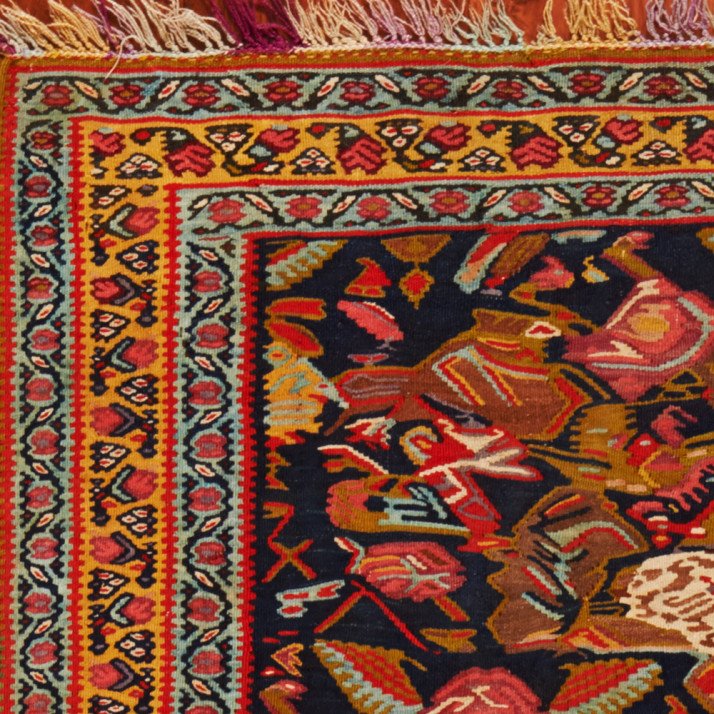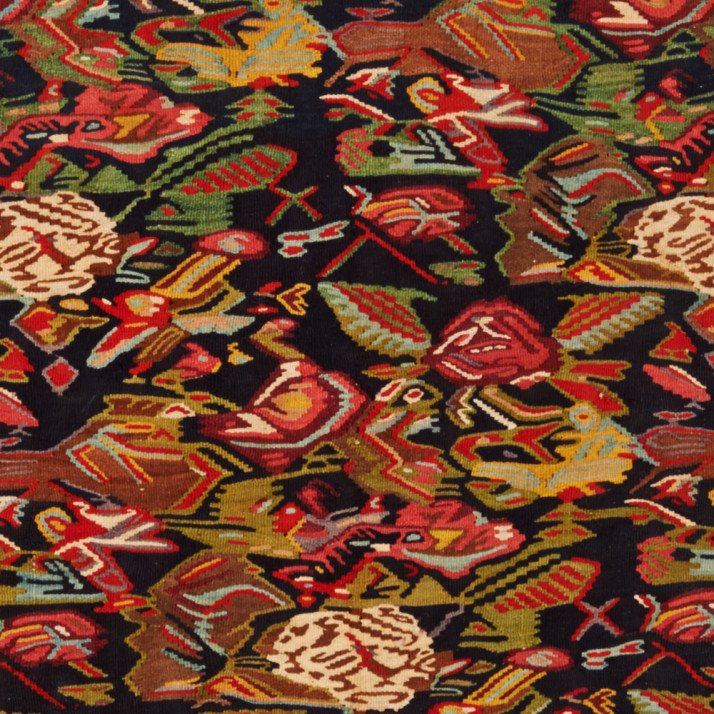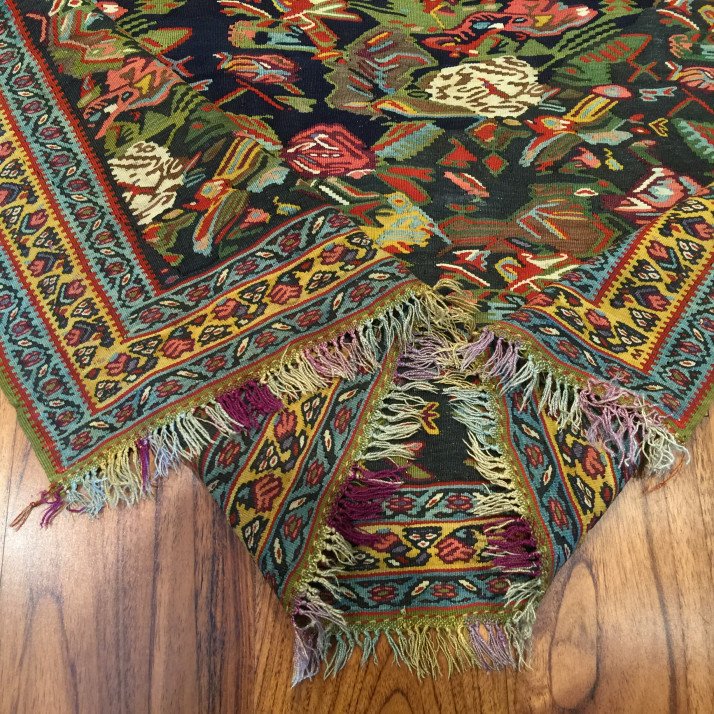Number (sold)
Style Flowery
Material Wool & Silk
Origin Senneh
Type Kilim
Size 158 x 106
Age 1880
The all time finest and rarest of all kilims are these small Senneh ones woven on 𝘏𝘢𝘧𝘵 𝘙𝘢𝘯𝘨 "seven-colored" silk warps. They were made as presentation pieces in the Qajar age, exchanged or presented as gifts between courtiers and noblemen. It seems unlikely they were ever intended to be used on the floor, but rather as ceremonial pieces to be placed on elevated surfaces on momentous occasions. The 𝘎𝘰𝘭 𝘍𝘢𝘳𝘢𝘯𝘨 field of flowers is a complex design that is difficult enough to create on a knotted pile carpet let alone an angular kilim technique. This is a stunning feat of craftsmanship and a top top collectible kilim.



As a carpet collector of 30 years, I have noticed a decline in the amount of truly unique and high quality carpets on the market. I have also noted a decline in the knowledge of merchants, generally. Hadi Maktabi stands against this trend as a both a curator for and an educator of his clients. His offerings are well-researched, museum quality carpets that are both singular and expertly chosen. In dealing with Hadi, I have experienced excellent communication, a high standard of service and extremely pleasant interactions. Warren D., Hong Kong 🇭🇰
You can't only be a customer of Hadi Maktabi. While his main purpose is rug dealing, he starts with story telling and ends with history selling. That's what I call high-end art curating and closing it all with an entertaining friendship. George El Hani, CEO Levica, Lebanon 🇱🇧
I first met Dr. Maktabi as a lecturer on carpet history and was captivated by his passion for the subject. Only later I knew him as a dealer, though even in our financial transactions, Hadi has been a gentle guide and friend. He has understood my taste and interests and made wonderful suggestions, but never in a pushy way. That is to say I have enjoyed working with him on several levels and wish to continue our excellent relations and dealings far into the future. A. Harvey Pincis, formerly Dar Al Athar Al Islamiyyah Museum (Kuwait), Latvia 🇱🇻